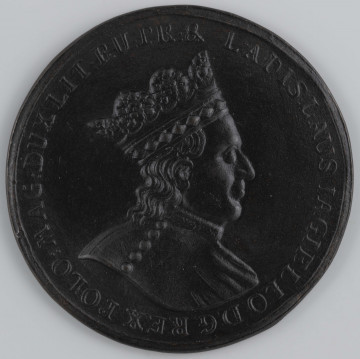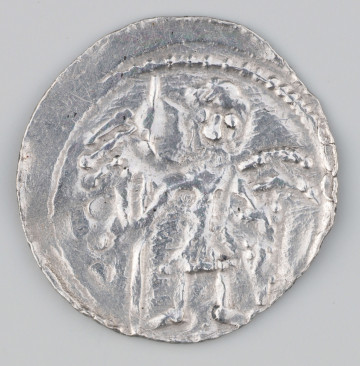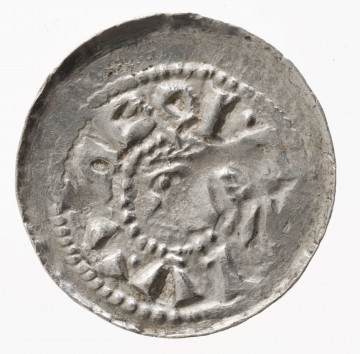
Władysław Jagiełło - Kajetan Sołtyk's entourage
1790 — 1795
National Museum in Lublin
Part of the collection: Money on Polish territory in the Middle Ages
The beginnings of Lithuanian minting date back to the 14th century. At that time, it consisted of local issues of individual dukes and was limited to the minting of occasional coins. As a result, until the times of Alexander Jagiellon, Lithuania did not have its own coinage useful in larger trade transactions. It was not until Alexander Jagiellon, first as the Grand Duke of Lithuania and later also as the King of Poland, that he started minting half-penny (‘półgrosz’) of a value slightly higher than the Crown ‘półgrosz’. Until that time, the ‘thicker’ coin was the Czech penny, which came to Lithuania in very large amounts. This is evidenced by the loan of 20 thousand of three scores of Prague pennies (1.2 million coins!), which Duke Vytautas granted to Władysław Jagiełło on the eve of the great war with the Order.
Vytautas, who after the treaty of Ostrov in 1392 became governor of Lithuania on behalf of Władysław Jagiełło, in the same year began minting his own coins, which were initially circulated together with those of Władysław Jagiełło and his rival Skirgiłło. Vytautas' coins bore the prince's personal insignia – a spearhead – on one side, and letters forming the inscription ПЕЧАТЪ on the other. in 1394 Skirgiłło died and Vytautas gained a dominant position in Lithuania. Consequently, he started issuing new coins depicting the personal marks of Władysław Jagiełło (a shield with a double cross) and Vytautas (a spearhead with a cross). The short-lived issue was followed by another one depicting the so-called Pillars of Gediminas and a rider with an upraised sword (Pogoń) and a cross at the top. In the 1920s and 1930s, the minting of the most numerous series of Vytautas coins began. Like the two previous ones, it contained no inscriptions and the images omitted any reference to Władysław Jagiełło. They depicted the family sign of Gediminas (Pillars of Gediminas) and Vytautas' personal emblem in the form of a spearhead with a cross. The presented coin also belongs to this type.
All the Vytautas’ issues described above were produced in the mint in Vilnius. Apart from them, the duke also minted coins of local range. These were coins issued in Smolensk with the so-called Gediminas' Pillars on one side and a lion with a lily at the end of its tail or two leopards. This issue was related to the occupation of Smolensk by Vytautas in 1396 and emphasised his rights to the city.
Leszek Poniewozik
Author / creator
Dimensions
cały obiekt: diameter: 13,9 mm
Object type
numismatic
Technique
stamp minting
Material
silver
Creation time / dating
Creation / finding place
Owner
The National Museum in Lublin
Identification number
Location / status

1790 — 1795
National Museum in Lublin

1152 — 1157
National Museum in Lublin

1069 — 1076
National Museum in Lublin
DISCOVER this TOPIC
National Museum in Szczecin
DISCOVER this PATH
Educational path